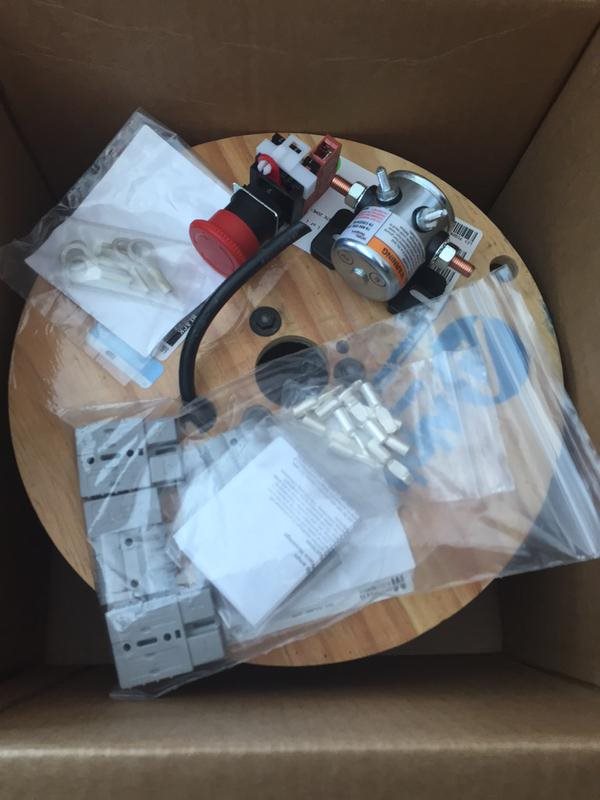As I announced in my blog last week, TI is sponsoring the build of an electric vehicle for Maker Faire Bay Area. I’ve teamed up with TX/RX Labs in Houston to build a vehicle for the Power Racing Series. I’ve got a lot to update everyone on so let’s get started!
As with any project, we needed a few parts that we couldn’t acquire locally. Over the past week or two, I’ve had a steady stream of deliveries from various electrical and mechanical suppliers. Here are some of the electrical safety components that we got from Mouser:
While we as engineers like to take things to extremes, we also like to do so safely (so we can do it again), and safety is an important part of the Power Racing Series. In addition to rules like the standardization of bumper heights and mandating the use of DOT approved motorcycle helmets, there are rules for electrical safety. All vehicles must have properly sized wiring and connectors as well as an emergency-off switch.
Simply connecting an emergency-off switch between our battery and motor wouldn’t work because the high motor currents would destroy the switch. Instead I choose to use a contactor (relay), to control the power to the system. I hooked up the contactor’s coil to the battery and the emergency-off switch. This way, only the coil current travels through the switch and the motor current travels through the heavy duty contacts within the contactor. With a little wire surgery, I was able to come up with this wiring harness:
Another aspect of electrical safety is battery safety. In our search for batteries we explored multiple options, but the best option for our application ended up being commercial hybrid vehicle batteries. They are designed for use in automotive applications (ok… so maybe this isn’t an automotive application…), are low-cost, and easily reconfigurable into different voltages and capacities.
I reached out to another local company that specializes in hybrid battery repair and replacement. After explaining our project, Home Town Hybrids generously offered to donate a few modules and gave us a lesson on the finer points of hybrid battery care. After we got the battery modules, I assembled 10 of the 7.2V modules into a 36V battery pack.
As I mentioned last week, Mark from TX/RX Labs designed a more powerful Brushless DC motor driver BoosterPack and the PCBs have arrived! The board uses TI’s DRV8301 gate driver and some beefy FETs. Together with the F28069M LaunchPad, they’ll make an unstoppable motor driver for our vehicle.
With our unstoppable motor drive solution, we’ll have a motor that’s spinning far more quickly than our rear wheels need to spin. To this end, we needed some type of drive reduction. Last week, we discussed the second stage of reduction based on two cogs and some roller chain that would give us a 2.44:1 reduction in speed, as well as a yet-to-be-designed 5:1 stage. This week I can tell you that this stage has been designed and is in the process of being fabricated. The 5:1 stage consists of pulleys and a timing belt. These components are lightweight, so they are well suited for the higher rotational speeds this part of the drive train will see. With a 14-tooth small pulley and a 60-tooth large pulley, we’ll end up getting 4.2:1 out of this stage. This combined with the 2.44:1 second stage will give us a total drive reduction of 10.45:1.
Now that all of our parts here, and with Maker Faire quickly approaching, it’s crunch time! The TX/RX Labs members and I are all working tirelessly to put together our entry for the inaugural race of the 2015 Power Racing Series. If you’re attending Maker Faire Bay Area, be sure to stop by both the race grounds and the TI booth to get a closer look at the car and talk with the team. If you can’t attend, don’t worry! We’ll have coverage of Maker Faire and the Power Racing Series here on the Launch Your Design blog, as well as on TI’s social channels. For more inside scoop, follow me on Twitter @yertnamreg!



